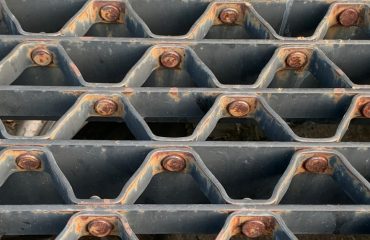In today’s competitive manufacturing landscape, striving for perfection is no longer a luxury; it’s a necessity. Zero-defect production, while seemingly an unattainable ideal, represents a powerful goal that drives continuous improvement and ultimately boosts profitability and customer satisfaction. This post delves into the intricacies of achieving zero-defect manufacturing, exploring the strategies, challenges, and benefits involved.
Understanding the Zero-Defect Philosophy
The zero-defect philosophy isn’t about achieving absolute perfection—a feat practically impossible in mass production. Instead, it’s a mindset focused on minimizing defects to an exceptionally low level. It emphasizes a proactive approach to quality control, shifting the focus from simple defect detection to preventing defects from occurring in the first place. This requires a cultural shift within the organization, fostering a commitment to quality at every stage of the production process. Employees at all levels must be empowered to identify and address potential problems before they lead to defects. This includes embracing a culture of continuous improvement, regular training, and open communication.
Implementing a Robust Quality Management System (QMS)
A robust QMS is the backbone of any successful zero-defect initiative. This system should encompass various elements, including:
- Preventive Measures: Proactive steps to prevent defects, such as thorough design reviews, robust supplier selection processes, and meticulous equipment maintenance.
- Process Control: Implementing standardized procedures and using statistical process control (SPC) techniques to monitor and control variations in the production process. This allows for early detection of potential problems before they escalate into significant defects.
- Defect Detection and Analysis: Establishing clear procedures for identifying defects, analyzing their root causes using tools like root cause analysis (RCA) and 5 Whys, and implementing corrective actions to prevent recurrence.
- Continuous Improvement: Implementing a continuous improvement system like Kaizen or Lean manufacturing to constantly refine processes and reduce the likelihood of defects. Regular audits and reviews are crucial for identifying areas for improvement.
- Documentation and Traceability: Maintaining detailed records of all processes, materials, and products to ensure complete traceability. This is crucial for identifying the source of defects and implementing effective corrective actions.
The Role of Technology in Achieving Zero Defects
Technology plays a pivotal role in modern zero-defect initiatives. Advanced technologies such as:
- Automated Inspection Systems: These systems utilize computer vision, sensors, and other technologies to automatically inspect products for defects, significantly improving speed and accuracy compared to manual inspection.
- Predictive Maintenance: Using data analytics and machine learning to predict equipment failures and schedule maintenance proactively, minimizing downtime and preventing defects caused by faulty equipment.
- Digital Twins: Creating virtual representations of the production process allows for simulation and optimization before implementation, reducing the risk of defects arising from design flaws or process inefficiencies.
- Data Analytics and Reporting: Collecting and analyzing data from various sources provides insights into defect patterns, allowing for targeted improvements and proactive intervention.
By leveraging these technologies, manufacturers can significantly enhance their ability to detect and prevent defects, moving closer to their zero-defect goals.
Overcoming Challenges in Pursuing Zero-Defect Production
The pursuit of zero-defect production is not without its challenges. These include:
- Cost of Implementation: Implementing a robust QMS and investing in advanced technologies can be expensive, requiring significant upfront investment.
- Resistance to Change: Implementing new processes and technologies may encounter resistance from employees accustomed to traditional methods. Effective communication and training are crucial to overcome this resistance.
- Complexity of Systems: Modern manufacturing processes are often complex and interconnected, making it challenging to identify and address the root causes of defects.
- Human Error: Despite the best efforts, human error remains a significant source of defects. Effective training, ergonomic design, and clear procedures can help minimize human error.
- Defining “Zero Defects”: Establishing clear and measurable metrics for “zero defects” is essential. It’s crucial to set realistic and achievable targets, rather than aiming for an impossible ideal.
The Benefits of Achieving Near-Zero Defect Production
Despite the challenges, the benefits of striving for zero-defect production are significant. These include:
- Improved Product Quality: The most obvious benefit is a significant improvement in product quality, leading to increased customer satisfaction and loyalty.
- Reduced Costs: Minimizing defects reduces waste, rework, and scrap, leading to significant cost savings.
- Enhanced Efficiency: Streamlined processes and reduced downtime improve overall production efficiency.
- Improved Reputation: A reputation for high-quality products enhances brand image and competitiveness.
- Increased Profitability: The combined effect of reduced costs, improved efficiency, and enhanced reputation translates to increased profitability.
Ultimately, the pursuit of zero-defect production is a journey of continuous improvement, requiring a long-term commitment and a holistic approach. While achieving absolute perfection may be elusive, the pursuit itself significantly enhances the quality, efficiency, and profitability of any manufacturing operation.
Tags: Zero-defect manufacturing, Quality management, Lean manufacturing, Six Sigma, Quality control




